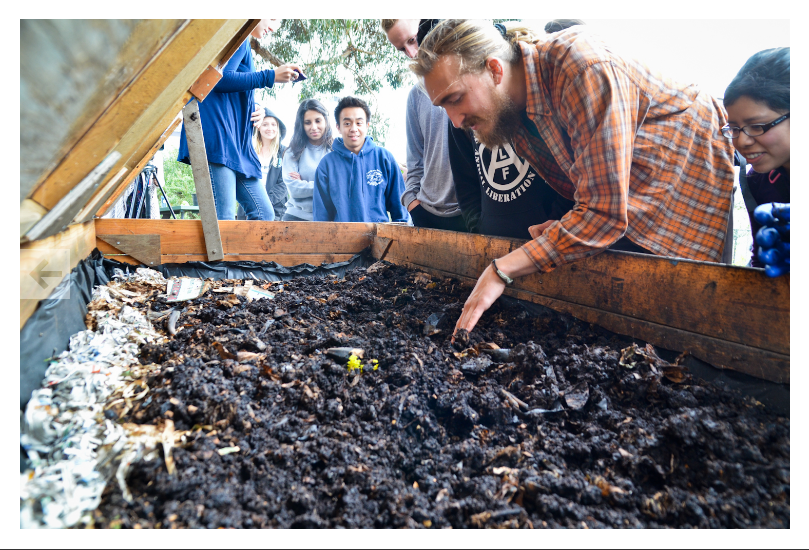Composting is the process of turning organic waste into a soil amendment that can be used to aid plant growth and development. Compost consists of a carbon source made up of a dried organic material (dried leaves, newspaper, sawdust, wood chips) and a nitrogen source made up of fresh organic material (food scraps, grass clippings, weeds). There are several different methods of composting suitable for a variety of different situations and different material inputs, in addition to the many ways you can compost in your own home! The City of Santa Barbara and UCSB are also working to increase composting at the community and campus level, respectively.
Home Aerobic Composting Guide
Aerobic composting is great for larger volumes of compostable material and for yard waste. If you tend your compost pile 2-3 times a week, have a sufficiently large pile, and balance all factors (temperature, moisture, carbon to nitrogen ratio), you can generate quality compost in less than a month. Dr. Robert Raabe of UC Berkeley has written an excellent guide on how to maximize your composting process. Our guide and the procedure we follow for our own aerobic compost pile is quite similar, though ours is designed to also help those who are content with a slower composting process if it means they won’t have to tend their pile as often. As always, feel free to contact us with any questions!
Part I: Compost Stall Design
Part II: Adding Material and Maintaining the Pile
Part III: Harvesting
Part IV: Troubleshooting
Part V: Troubleshooting
Home Vermicomposting Guide
Vermicomposting works well for people who do not have outdoor space for an aerobic compost bin and for those with small but fairly consistent levels of fruit and vegetable food waste. It requires a little more care and attention than other types of composting, but the finished product is a fantastic soil amendment.
This guide is split up into five parts, each describing a different aspect of vermicomposting:
Part I: Materials and Setup
Part II: Feeding and Maintenance
Part III: Harvesting
Part IV: Using Worm Castings
Part V: Troubleshooting

